
Dog carcass
A dog managed to access the crawl space, trapping himself down below. Sealing vents does not only create a healthier, dry crawl space, it also prevents wildlife from entering. Dead wildlife is itself a problem because it can attract other wildlife and insects.
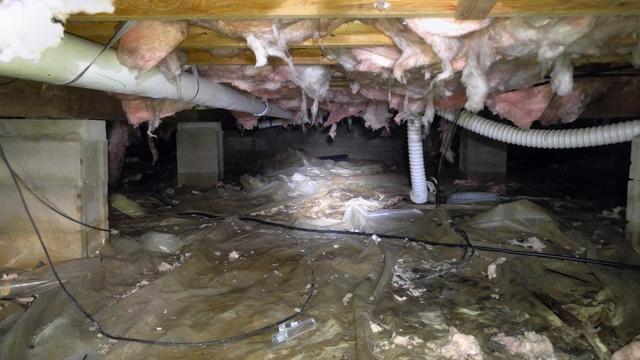
Crawl Space Before Clean Up
Wet, moist and moldy crawl space.
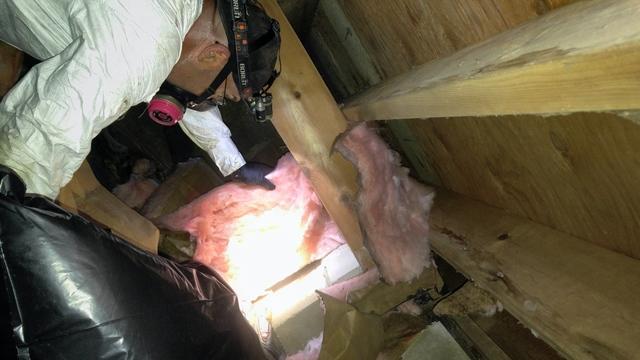
Removing Old Insulation
We needed to clean out the crawl space and remove all the contaminated insulation and materials.
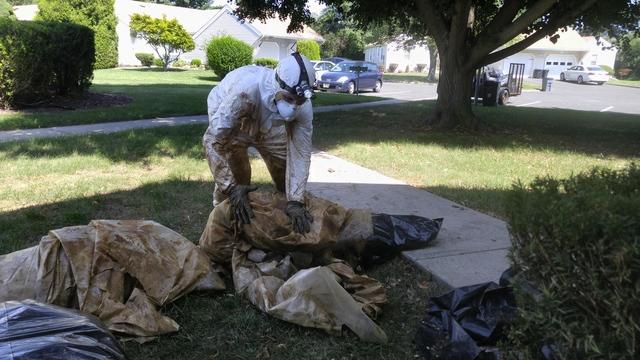
Removing the Old Moldy Vapor Barrier
We also removed plywood that was being used to cover the vents and the old vapor barrier. The plywood, which was in poor condition, did not fully seal the vents and was allowing water and moisture to enter the crawl space.
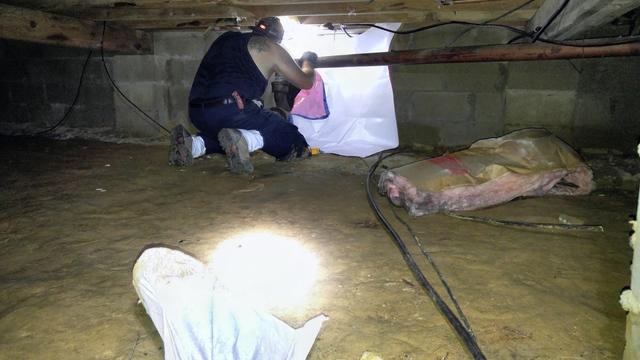
Installing a Vinyl Barrier
To keep out water and moisture, we sealed the vents with foam and foam spray and installed a vinyl barrier between this crawl space and the crawl space of an adjoining unit in the complex.
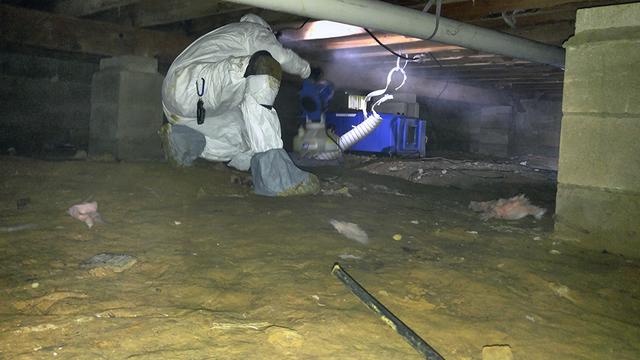
Treating the Mold
With the crawl space cleaned out, we could begin the mold treatment. First, we treated the entire crawl space with our EPA-registered anti-microbial called MAPS 1. This solution attacks mold on a cellular level and immediately kills it. Next, we used our mold stain remover and scrubbed away all the mold growth throughout the crawl space.
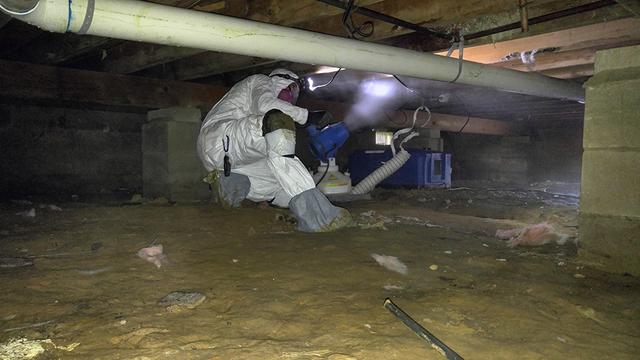
Now for MAPS 2
Afterward, we applied our patented sealant called MAPS 2. MAPS 2 is a moisture-sensitive application that encapsulates the surface mold is growing on and renders it harmless, inert, and non-allergenic. One of the best features of MAPS 2 is that it will reactivate whenever it gets wet to prevent future mold growth.
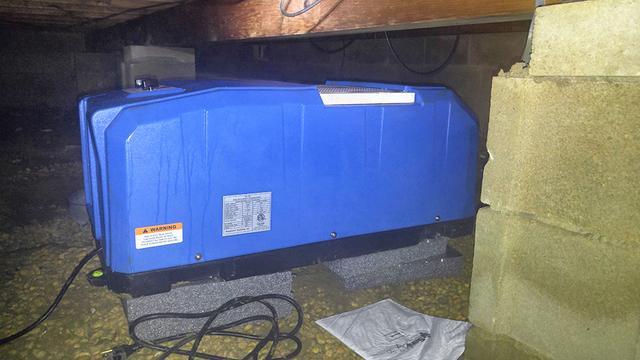
Dehumidifier Installation
Finally, to address the high humidity levels in the crawl space, we installed a Sani-Dry Sedona commercial grade dehumidifier. These dehumidifiers cost less to run than other dehumidifiers, cover over 3000 square feet, are energy efficient, and will properly control the humidity levels in the crawl space.


